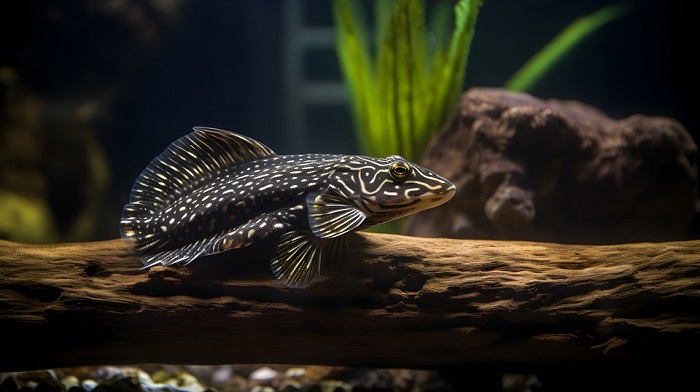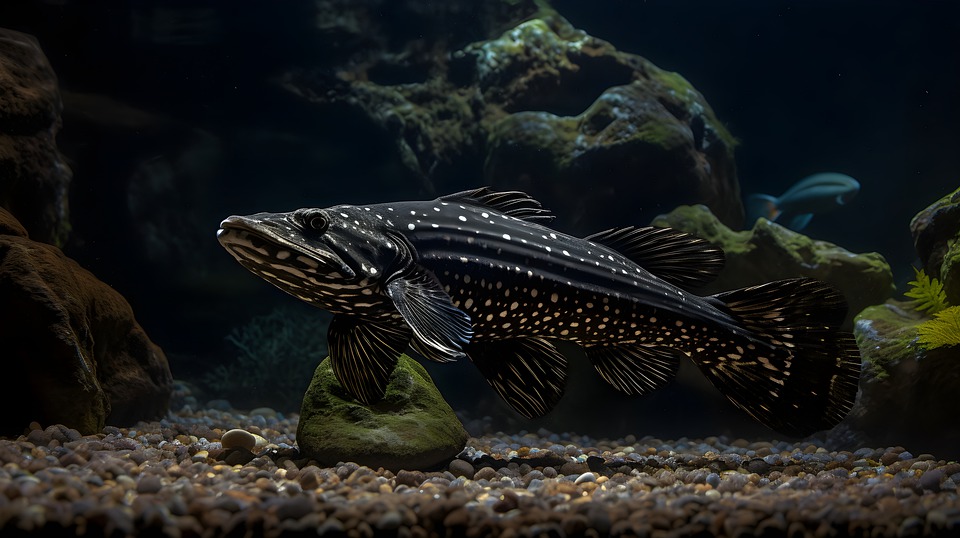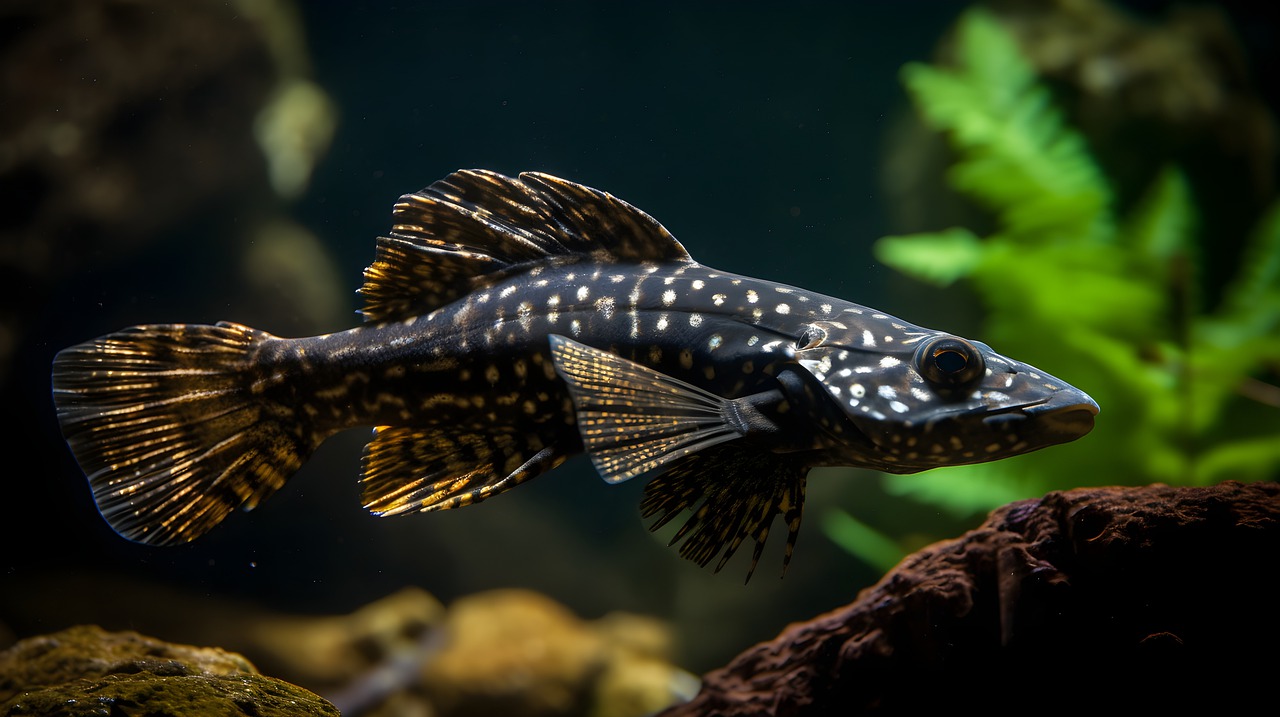Plecos, also known as suckermouth catfish, are popular aquarium fish prized for their algae-eating abilities and peaceful demeanor. These hardy creatures can live for many years with proper care. However, like any living being, plecos can become ill or stressed, and recognizing the signs early can make a big difference in their survival. This article highlights the key behavioral, physical, and water quality changes that might indicate your beloved pleco is struggling.
Understanding Normal Pleco Behavior
Before diving into signs of illness, it’s important to understand how healthy plecos typically behave. Plecos are nocturnal fish, meaning they become most active at night. During the day, they tend to hide in caves, driftwood, or under plants. This doesn’t necessarily mean something is wrong if you don’t see your pleco much during the day. However, a sudden and prolonged shift in their usual hiding habits could be a cause for concern.
Behavioral Signs of a Sick Pleco
Several behavioral changes can indicate your pleco might be unwell. Here are some key things to look out for:
- Decreased Activity: As mentioned earlier, plecos are naturally on the move at night. But if your pleco seems lethargic even during their active hours, showing a lack of interest in exploring the tank, it could be a sign of illness.
- Loss of Appetite: Plecos are omnivores, enjoying a diet of algae, sinking fish food, vegetables like zucchini and cucumber, and even algae wafers. If your pleco consistently refuses food or shows a significant decrease in appetite, it might be a sign of internal issues, digestive problems, or external parasites.
- Erratic Swimming: Healthy plecos have a slow, gliding swimming style. If your pleco exhibits erratic swimming patterns, darting around the tank rapidly, gasping at the water surface, or struggling to stay upright, these could be signs of respiratory distress, internal parasite infestation, or poor water quality.
- Social Withdrawal (if applicable): While plecos are generally solitary fish, they can sometimes co-exist peacefully with tank mates. However, if your pleco shows unusual aggression towards other fish, hides excessively even during the day, or displays sudden timidity, it could indicate stress or illness affecting their behavior.

Physical Signs of a Sick Pleco
Changes in your pleco’s physical appearance can also be telltale signs of illness. Here are some key physical indicators to watch for:
- Difficulty Breathing: Healthy plecos have smooth, rhythmic gill movements. If your pleco shows signs of labored breathing, rapid gill movement, or gasping for air at the surface, it could indicate ammonia or nitrite poisoning, oxygen deficiency in the water, or gill infections.
- Body Shape Changes: A healthy pleco has a rounded belly, indicating a well-fed state. A sunken belly, especially when accompanied by lethargy, could point towards malnutrition, internal parasites, or digestive issues. On the other hand, bloating can also be a sign of internal problems or dropsy, a bacterial infection.
- Skin and Fin Issues: Healthy plecos have smooth, clear skin with vibrant colors. Discoloration, fungal patches, white spots, or lesions on the body are potential signs of bacterial or parasitic infections. Clamped fins, where the fins are held tightly against the body, or fin rot (frayed or deteriorating fins) could also indicate stress, bacterial infections, or poor water quality.
- Cloudy Eyes: Healthy plecos have clear, bright eyes. Cloudy eyes, bulging eyes, or pop-eye can be caused by various factors like infections, physical injuries, or water quality issues.
Water Quality and Its Impact on Pleco Health
Water quality plays a crucial role in maintaining pleco health. Here’s how improper water parameters can contribute to their decline:
- Ammonia and Nitrite Levels: Ammonia and nitrite are toxic waste products produced by fish waste and uneaten food. If these levels are not kept under control through regular water changes and proper filtration, they can cause stress, weaken the immune system, and ultimately be fatal to your pleco.
- Water Parameter Fluctuations: Plecos thrive in stable water conditions. Sudden changes in pH, temperature, or oxygen levels can cause stress, making them more susceptible to illnesses.
- Poor Water Maintenance: Regular water changes and tank cleaning are essential for removing waste products and preventing ammonia spikes. Dirty water can lead to bacterial and fungal infections, ultimately harming your pleco.
Additional Considerations
It’s important to consider other factors that might mimic signs of illness:
- Old Age: Plecos, depending on the species, can live for 10-20 years. If your pleco is approaching its natural lifespan, some of the signs listed above could indicate natural aging rather than a specific illness. However, consulting an experienced aquarist or veterinarian can help differentiate between the two.
- New Environment: Introducing a pleco to a new tank can be stressful. Some of the initial behavioral changes, like hiding more than usual or reduced appetite, might be temporary as they adjust to their new surroundings. These signs should subside within a few days to a week. However, if the unusual behavior persists, it’s best to investigate further.
Early Diagnosis and Treatment
Early diagnosis and treatment are crucial for improving your pleco’s chances of recovery. If you observe any of the signs mentioned above, it’s important to act quickly. Here are some initial steps you can take:
- Monitor Water Quality: Test your aquarium water for ammonia, nitrite, nitrate, pH, temperature, and oxygen levels. Identifying any imbalances can help determine the cause of the problem.
- Perform a Water Change: Conduct a larger-than-usual water change (around 50%) to remove any potential toxins and improve water quality.
- Examine the Tank Environment: Inspect your tank for any sharp objects that could have injured your pleco. Ensure there are enough hiding places for your pleco to feel secure.
- Adjust Water Parameters: If the water parameters are outside the ideal range for your specific pleco species, take steps to gently adjust them back to a healthy level. Consult online resources or a fish store for specific guidance on adjusting water parameters safely.
- Isolate the Pleco (if Necessary): If you suspect your pleco might be contagious, consider isolating them in a quarantine tank to prevent the spread of any potential illness to other tank mates.
Seeking Professional Help
If the signs persist despite your initial efforts, or if you suspect a serious illness, it’s highly recommended to seek professional help. Here are some resources that can be beneficial:
- Consult an Experienced Aquarist: Talk to a knowledgeable aquarist at a reputable fish store. They can provide valuable insights based on their experience and might be able to recommend specific treatment options.
- Visit a Veterinarian: While not all veterinarians specialize in fish, some do have expertise in treating aquarium fish. A vet can perform a thorough examination, diagnose the underlying issue, and prescribe appropriate medication if necessary.

Preventative Measures for a Healthy Pleco
The best way to ensure your pleco lives a long and healthy life is through proper care and preventative measures. Here are some key practices to follow:
- Provide a Suitable Tank Environment: Choose a tank size appropriate for your pleco species. Decorate the tank with plenty of hiding places like caves, driftwood, and plants. Maintain a substrate suitable for bottom feeders like plecos, such as sand or smooth gravel.
- Maintain Excellent Water Quality: Conduct regular water changes (around 25-30%) every week or two. Utilize a high-quality filter system appropriate for your tank size and ensure it’s properly maintained. Monitor water parameters regularly.
- Offer a Balanced Diet: Provide your pleco with a varied diet that includes algae wafers, sinking fish food, blanched vegetables like zucchini and cucumber, and even occasional treats like pieces of fruit. This ensures they receive all the necessary nutrients for optimal health.
- Monitor Your Pleco Regularly: Observe your pleco’s behavior and physical appearance daily. Early detection of any changes can make a significant difference in their treatment and recovery.
Conclusion
Plecos are fascinating and rewarding aquarium fish. Understanding their normal behavior and potential health concerns can help you provide the best possible care for your beloved pleco companion. Always pay close attention to their behavior, physical health, and water quality, and act promptly if any issues arise to ensure they live a long and healthy life in your tank. Remember, prevention is always better than cure. Implement the preventative measures mentioned above to create a thriving environment where your pleco can flourish.

